Fox Racing Friday | Ricky Carmichael’s 2000 Pilot Helmet
Share

Fox Racing Friday | Ricky Carmichael’s 2000 Pilot Helmet
Presented by Fox Racing
When Fox Racing debuted its first Pilot motocross helmet in the late 90s, it was the culmination of a lot of research and development, and it drew plenty of praise from the motocross media and riders alike for its unique look and groundbreaking design. “If you had asked me in the mid-90s if Fox would ever produce a helmet, I would have told you not in a million years,” said Pete Fox. “At the time, we were a motocross apparel manufacturer and the thought of producing our own helmet seemed completely unreasonable, because of both the liability aspect and our desire to always innovate in any arena we enter.
“We noticed, though, that at the time the market was dominated by Japanese helmet makers and the technology seemed to be stagnant. I also believe that was around the time that Bell Helmets was struggling with bankruptcy, so the time seemed right to finally create our own helmet.”
One of the most distinguishing design features of the original Fox Pilot helmet was the venting system that allowed air to enter through a pair of forehead vents and exit out the rear. “At the time, venting throughout the helmet wasn’t as prevalent as it is nowadays,” said Fox. “Aside from the vents in the chin bar mouthpiece, venting didn’t seem to be very developed. The venting system in the Pilot utilized raised air channels between the EPS and the shell, and that gave the helmet a very unique look.”
“I loved the look of the Pilot helmet,” said Ricky Carmichael. “And of course, this one is especially cool because it is fully custom. Technology today has come a long way and guys can race in off-the-shelf helmets, but back then it was cooler to have your own design.”

Though there are no logos present on the visor, the paint job on RC’s helmet is the undeniable handiwork of Troy Lee Designs. Another dead giveaway is the trademark TLD helmet fin. “Allowing RC to have his helmet painted by Troy Lee was touchy because TLD had started to make apparel,” said Fox. “But we were never ones to keep our riders from feeling cool. (Laughs) It was a bummer because the shell of our helmet was so distinctive, and that fin took away from its appearance.”
“I worked that system as long as I could,” remembered Carmichael with a chuckle. “I always had Troy Lee paint jobs when I was in Shoeis and Bells before I switched to Fox, and I wanted to keep having Troy paint my lids. I know I probably gave both parties ulcers, but back then you had to look cool with a non-standard paint job, and the helmet fin was also a requirement!”
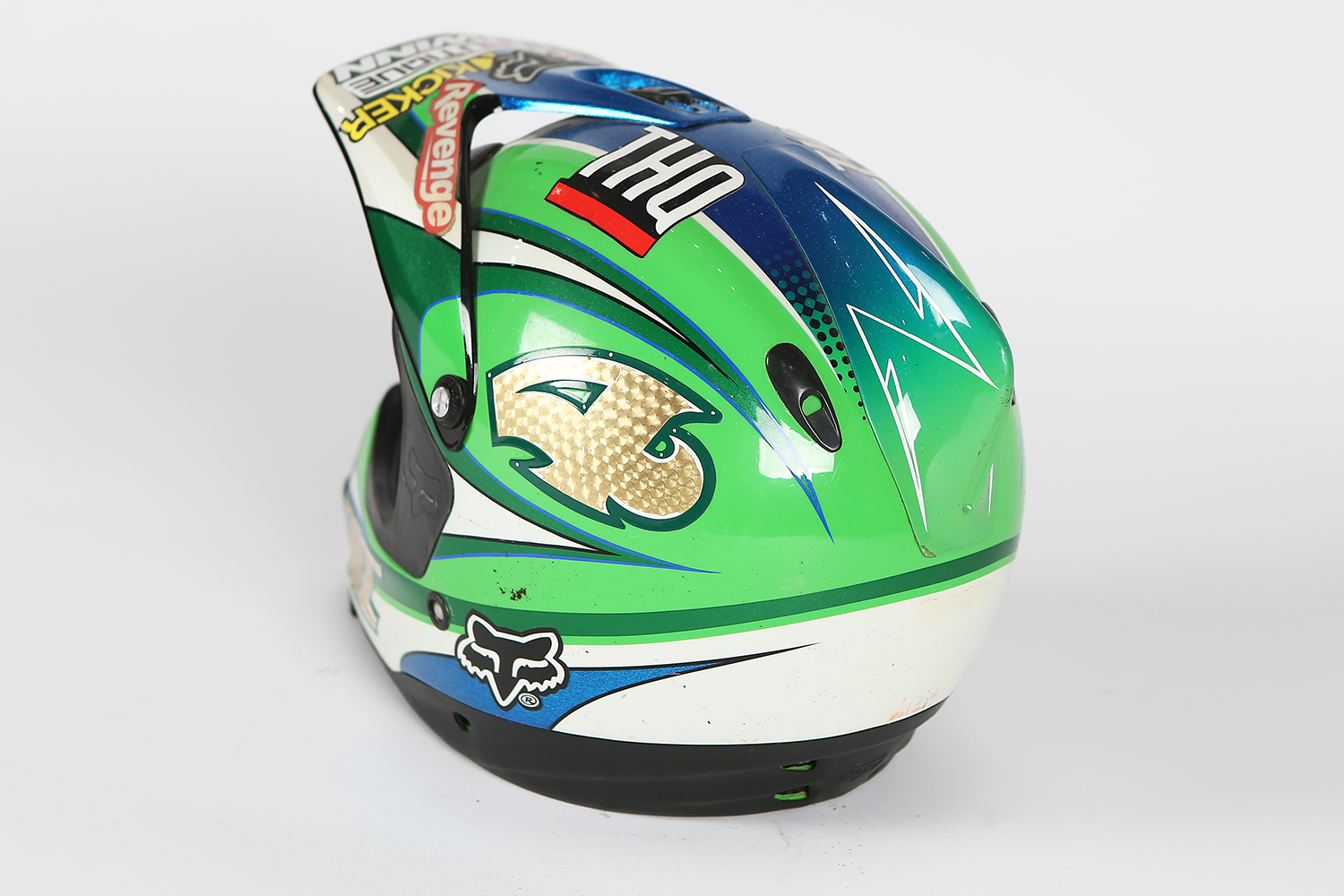
The original Fox Pilot – according to Pete Fox – was produced in Italy by helmet maker AGV. “For some reason, I can’t recall exactly, we had our helmet produced by AGV initially,” said Fox. “Eventually, we had it produced elsewhere because they weren’t the greatest at producing things on time. But, the helmet was all our design from the start; we would never have chosen a private label helmet off the shelf and had our logo added to it.”

“You know what’s crazy, man?” said Carmichael. “When I look at this helmet, I can visualize everything about that year: how my bike felt, the geometry, the way it felt under acceleration…I can remember how it felt watching tapes of myself in the truck after practice. This really takes me back.
“Amd how about the damned billboard of logos on my visor! (Laughs) Aside from THQ, which paid a good amount of cheddar and produced my video game, all of those stickers were to thank companies or buddies who hooked me up with free product. You don’t see a lot of that nowadays: helmet logos are big business. On the side under the visor…The Shop. That was a sticker I ran for my buddies Anthony Paggio and Jeremy Albrecht. It was supposed to be a agency of some sort but it never happened I think.
“But man, that helmet was sweet. Especially the gold leaf in the number four and in the RC on the chin. Great memories here.”
Editorial Fox Product Spotlight of the Week
 Fox V3 Helmet featuring Fluid Inside
Fox V3 Helmet featuring Fluid Inside
Price: $499.99
The Details
Introduced last month, the all-new Fox V3 Helmet boasts a wealth of new design and safety features that make it stand out from other premium off-road motorcycle helmets. At the heart of the new helmet is an all-new MCT (multi-composite technology) shell that comes in four shell sizes, and is paired with a Varizorb EPS liner, which features multi-density foam to help disperse impact energy more efficiently thanks to its cone-shaped injected design. To address the dangers of rotational impacts, Fluid Inside technology is incorporated into the inside of the helmet, between the EPS and comfort liner. The fluid pods are designed to mimic the cerebral fluid that protects your brain from coming into contact with the inside of your skull, offering both linear and rotational impact dampening. In total, seven Fluid Inside pods are spread throughout the helmet to help disperse impacts in a crash. Another unique feature of the new V3 helmet is its two-piece construction. While the main shell is traditional in design, the entire eyeport and chinbar is a separate piece, dubbed The Cage. Made of composite materials, the piece is designed to offer impact energy management than a traditional one-piece design. The entire helmet is extensively vented, with massive ports that are protected by injected mesh screens. Finally, Fox’s patented MVRS magnetic visor system is incorporated. Designed to detach on impact in the event of a crash, the system helps guard against snagging on the ground and mitigate external rotational forces.
SML Says
The all-new V3 definitely looks unlike any other motocross helmet. In fact, it looks much like the Rampage Pro Carbon mountain bike helmet we’ve come to love. What do we think of the new moto helmet, though? Having given it a thorough and complete test (unfortunately?) by suffering a massive crash in it on our first day of riding in it, we can confidently give it a two thumbs up review.
But let’s get to our pre-crash impressions, first! The new V3 fits very well, and we encountered none of the pressure points that we initially suspected that we might from the Fluid Inside pods. Instead, the helmet slips on nicely and has a soft, luxurious feel inside against your head and face. Unlike the previous V3, the new helmet has a deeper fit, and the chin bar offers plenty of clearance for your face. The previous V3’s chinbar felt close to our face and had a much different feel. We love the fit of the new helmet, and it offers a great field of vision and accepts all goggles well, even the current trend of oversized goggles from other manufacturers.
Ventilation is amazing in the V3, as air flows through the massive vents and cools your head. On cold days, we found ourselves actually cold inside the V3! As one might expect, more sound reaches your ears due to the generous venting, but that is something that only takes a few laps to grow accustomed to.
The MVRS visor is not adjustable, but the height of the visor seems just right for the majority of riders who will race in it. Trail riders might wish for a lower setting, but the standard location is proper! The MVRS is more sturdy than it was on earlier helmets, and it takes quite an impact to dislodge the visor. But, we can state from experience that it does indeed detach on impact.
The crash we had in the new V3 was pretty significant. (Switch to a first-person account, here.) An overdose of throttle in a dry, slick corner sent me into a violent high-side, and I slapped my head onto the hard-packed SoCal dirt with such force, that it rendered me kookoo for the better part of an hour. A trip to the ER for a CT scan revealed no bruising, bleeding, or swelling of my brain, and I was released with a clean bill of health and a prescription for pain killers. Initially, I was bummed out about suffering a mild concussion in the new helmet, but a few days later I connected with Mark Finley from Fox Racing and got to take a look at my crash-damaged lid. The damage done to the helmet made it obvious that the impact it protected me from was pretty damned big. Having more helmet-smashing experience than I’d like to admit, I can honestly say that the V3 likely saved my life, and I would have suffered a mild concussion at best in any helmet I could have been wearing. The brunt of the impact was in the right forehead area, and the EPS was compressed to the point that it cracked. The Cage eyeport and chinbar was completely intact, proving that the two-piece design is indeed sturdy enough to protect against big impacts.
Would I ride and race in the new Fox Racing V3 again? Absolutely. Learn more about my crash-damaged V3 in the video below.
- swap

















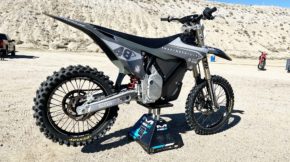

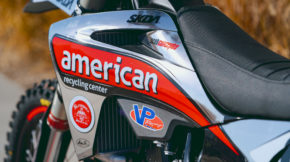
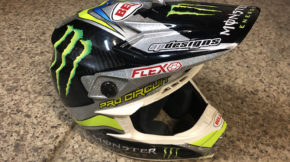
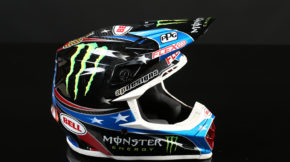
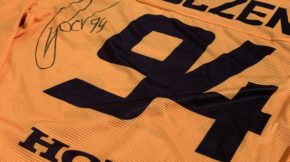
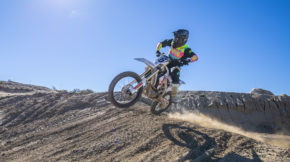


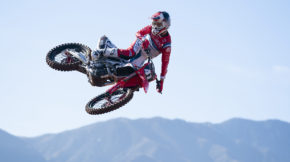

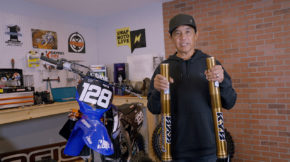



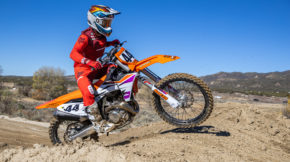



Bring the fins back!! Great article!
Greatttttt article. Wish I came across stuff like this myself!
It’s cool to see the older gear and read the stories behind it 🤙
Great article and the old stuff rc ran was hideous. Glad to see fox stepping the technology up
Would love to see some more early 2000’s and late 90’s throwback stuff on the page! Also, when you guys record podcasts, can you make sure the mic’s are close to your mouths? Sometimes it’ll be really quiet and I have to turn the volume all the way up then you guys will adjust it and it’ll be super loud! Just a suggestion. Thanks for all you guys do!